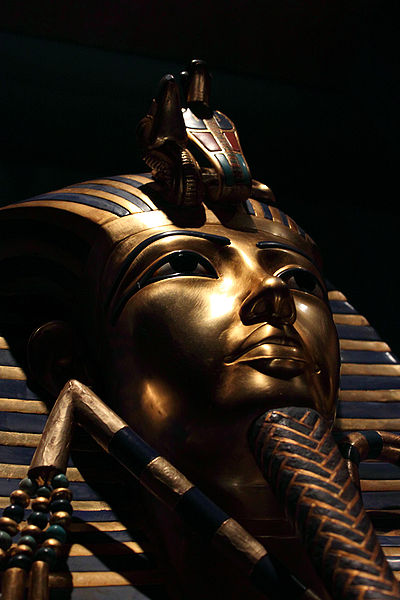
I've just had a first-hand - and rather disconcerting - insight into how conspiracy theories start. A week or so ago I wrote a light-hearted blog post for New Scientist, looking into a theory that King Tutankhamen might have had a hormonal disorder that among other things causes underdeveloped genitalia.
Researchers analysing Tut's mummy had just ruled out the idea, citing the fact that Tut's penis is "well-developed". Intriguingly, however, their paper said that the penis is no longer attached to the rest of the mummy. On a whim I decided to double check that the organ is definitely Tut's and couldn't have been swapped by ancient embalmers to cover up his condition. Unlikely, perhaps, but surely a question that was begging to be asked.
Egyptologist John Taylor confirmed that the penis is indeed Tut's, as it was attached to the body when the mummy was first unwrapped. It must have broken off in modern times, probably during an early autopsy. So far so interesting - but it was clear that nothing untoward had occurred. I added a couple of tongue-in-cheek digs at conspiracy theorists, and it made a fun little tale for a Friday afternoon.
Unfortunately, some journalists seem to have taken those digs seriously. The story went viral. But it wasn't my story that went viral. In the version rapidly gaining momentum across the internet, I was now reported as claiming that Tut's penis has been stolen in order to cover up its small size.
My original article ruled out the idea that ancient embalmers swapped Tut's penis. And though I mentioned in passing the well-known fact that it was thought missing for a while, I did not suggest that the penis has been switched more recently either - I'm not aware of any evidence for this idea.
The trouble seems to have started with an article on Time's website, written by an intern, who reported that "some, including Marchant...believe that Tut's penis was swapped sometime after his body was embalmed, suggesting a conspiracy to save him from embarrassment". (The words "including Marchant" have since been removed, at my request.)
Other blogs and news sites followed, twisting the story further. According to the New York Daily News, "scientists" think the penis was taken. Meanwhile a Denver blog reports that the penis is still missing.
This reminds me a bit of a news story I once edited for New Scientist, about a physicist who said he didn't think the elusive Higgs boson (nicknamed "the God particle") would ever be found. The news story and accompanying editorial reported that other physicists were confident the particle would be found, explained why the £6-billion Large Hadron Collider (LHC), then being built to look for the Higgs, was still important, and pointed out that it would actually be more exciting for physics if the Higgs particle didn't exist.
Then The Times newspaper followed up the story under the headline "God particle disappears down £6-billion drain", and New Scientist received sackfuls of complaints from physicists around the world. It was the Times headline that really upset them, but they blamed New Scientist. No matter how responsible our own story, they said, we were irresponsible to provide ammunition that might allow others to attack the LHC.
With the Tut blog post, was I irresponsible for writing something that others could then twist into a conspiracy theory? With hindsight I wish I'd spent more time making sure the article was idiot-proof, though I'd hate to think that journalists can't have fun with stories, for fear of how they might be misconstrued. Either way, I haven't had any angry letters from Egyptologists yet (though one blogger has accused me of "living in the realm of fantasy"). But I've got some sacks ready just in case...